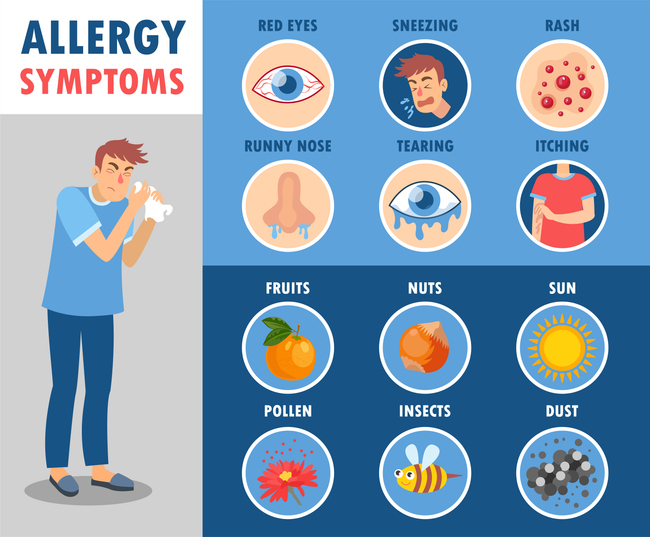
IgG and IgE Explained: How to Spot Hidden Food Triggers and Feel Better
IgG and IgE Explained: How to Spot Hidden Food Triggers and Feel Better
More and more people today are dealing with food-related health issues. From mystery stomach aches to breakouts and fatigue, it’s easy to feel lost when your body reacts to something you ate. To get to the bottom of it, understanding how your immune system works—especially how it uses IgG and IgE antibodies—can help you make real progress in your wellness journey.
Let’s walk through what IgG and IgE mean, how they’re different, and how a new lab test can finally give you the necessary answers. We will discuss Alpha Gal Syndrome in another blog (delayed IgE response).
What Are Antibodies and Why Do They Matter?
Your body’s immune system is like your internal security system. It sends out special defenders called antibodies to recognize and fight off things it sees as threats. These might include germs, pollen, or even food. The two antibodies most involved in food reactions are IgG and IgE.
Each type works differently, and knowing which one is at play can help you understand your symptoms better.
Fast Reactions: What IgE Allergies Look Like
IgE stands for Immunoglobulin E. When you have a true food allergy, it’s usually because your immune system has created IgE antibodies against a specific food. These reactions happen fast—sometimes within minutes—and can be serious. Seek IMMEDIATE MEDICAL ATTENTION IF YOU EXPERIENCE THIS TYPE OF RESPONSE!
Common Signs of an IgE Food Allergy:
● Red, itchy skin or hives
● Swelling in the lips, tongue, or throat
● Trouble breathing or wheezing
● Nausea or throwing up
● In severe cases, anaphylaxis (a dangerous whole-body reaction)
Peanuts, shellfish, eggs, milk, and wheat are just a few foods that can trigger this kind of reaction. If you think you have a food allergy, it’s very important to avoid the food and get tested.
Slower Symptoms: What IgG Sensitivities Look Like
IgG stands for Immunoglobulin G. This kind of response usually shows up much more slowly, hours or even days after you eat a certain food. That delay can make it tough to figure out what’s bothering you.
Common Symptoms of an IgG Food Sensitivity:
● Stomach problems like bloating, gas, or diarrhea
● Ongoing fatigue or brain fog
● Headaches or migraines
● Skin troubles like acne or eczema
● Mood changes like anxiety or irritability
These reactions are usually not dangerous, but they can be frustrating and reduce your quality of life. Learning which foods may be causing them can make a huge difference.Are IgG and IgE the Same Thing?
Nope. Here’s a quick cheat sheet to help keep them straight:
Feature IgE (Allergy):
Reaction time Fast (minutes to hours)
Severity Can be life-threatening
Symptoms Swelling, hives, breathing trouble
Involves histamine and other mediators
IgG (Sensitivity)
Slow (hours to days)
Typically mild but chronic
Bloating, fatigue, headaches
Why Testing Matters More Than Guessing
If you’re tired of guessing what’s causing your symptoms, it might be time to look at testing. Elimination diets take time and can be tricky. Plus, you may cut out foods that aren’t even the problem.
That’s where antibody testing comes in. These tests can point you in the right direction by measuring your body’s response to specific foods.
● IgE Testing: Shows if you have immediate allergic responses to common foods.
● IgG Testing: Helps identify delayed reactions tied to chronic symptoms.
Some experts say IgG test results should be interpreted carefully because high IgG levels could just mean you’ve eaten a food recently. But when paired with your symptoms, the results can still offer valuable clues.
Meet the IgE & IgG Food Combined Explorer Test
The new IgE & IgG Food Combined Explorer Test makes it easier to get the full picture of how your body responds to food. Here’s what makes this test a standout:
● Covers Over 400 Items: It checks for IgE reactions to 150+ foods and environmental allergens, and IgG reactions to 250+ food items.
● Easy Sample Collection: Just a quick finger-prick done at home.
● Fast Turnaround: Get your detailed results in just 10–12 days.
● Clear Reports: You’ll get a color-coded breakdown showing which foods may be causing problems.
With all this info, you can work with your doctor or nutritionist to create a diet that supports healing and reduces symptoms.
Want to Feel Better? Find the Foods That Don’t Work for You
You don’t have to live with discomfort, bloating, or mystery skin breakouts. If you’ve tried changing your diet without results, it’s time to get real answers.
The IgE and IgG Food Allergy Combined Explorer Test is available now through MyLabsForLife and HealthyGutHealthyBrain. You can choose the IgE or IgG panel, or get both for the most complete view.
Ready to stop the guesswork? Order your test today and take the first step toward feeling better.
Health Disclaimer: It is recommended the reader of this site consult with a qualified healthcare provider of their choice when using any information obtained from this site, affiliate sites, and other online websites and blogs. Please consult your healthcare provider before making any healthcare decisions or for guidance about a specific medical condition.
References:
1. American Academy of Allergy, Asthma & Immunology. “IgG Food Tests and Their Role in Diagnosing Food Allergies.” AAAAI, https://www.aaaai.org/tools-for-the-public/conditions-library/allergies/igg-food-test .
2. Food Allergy Research & Education. “Understanding the Difference Between Food Allergies and Food Intolerances.” FARE, https://www.foodallergy.org/resources/food-allergy-vs-food-intolerance .
3. Mayo Clinic Staff. “Food Allergy.” Mayo Clinic, 30 Sept. 2023, https://www.mayoclinic.org/diseases-conditions/food-allergy/symptoms-causes/syc-20355095 .
4. Harvard Health Publishing. “Are Food Sensitivity Tests Worth It?” Harvard Medical School, 8 Apr. 2022, https://www.health.harvard.edu/blog/are-food-sensitivity-tests-worth-it-202204082708 .